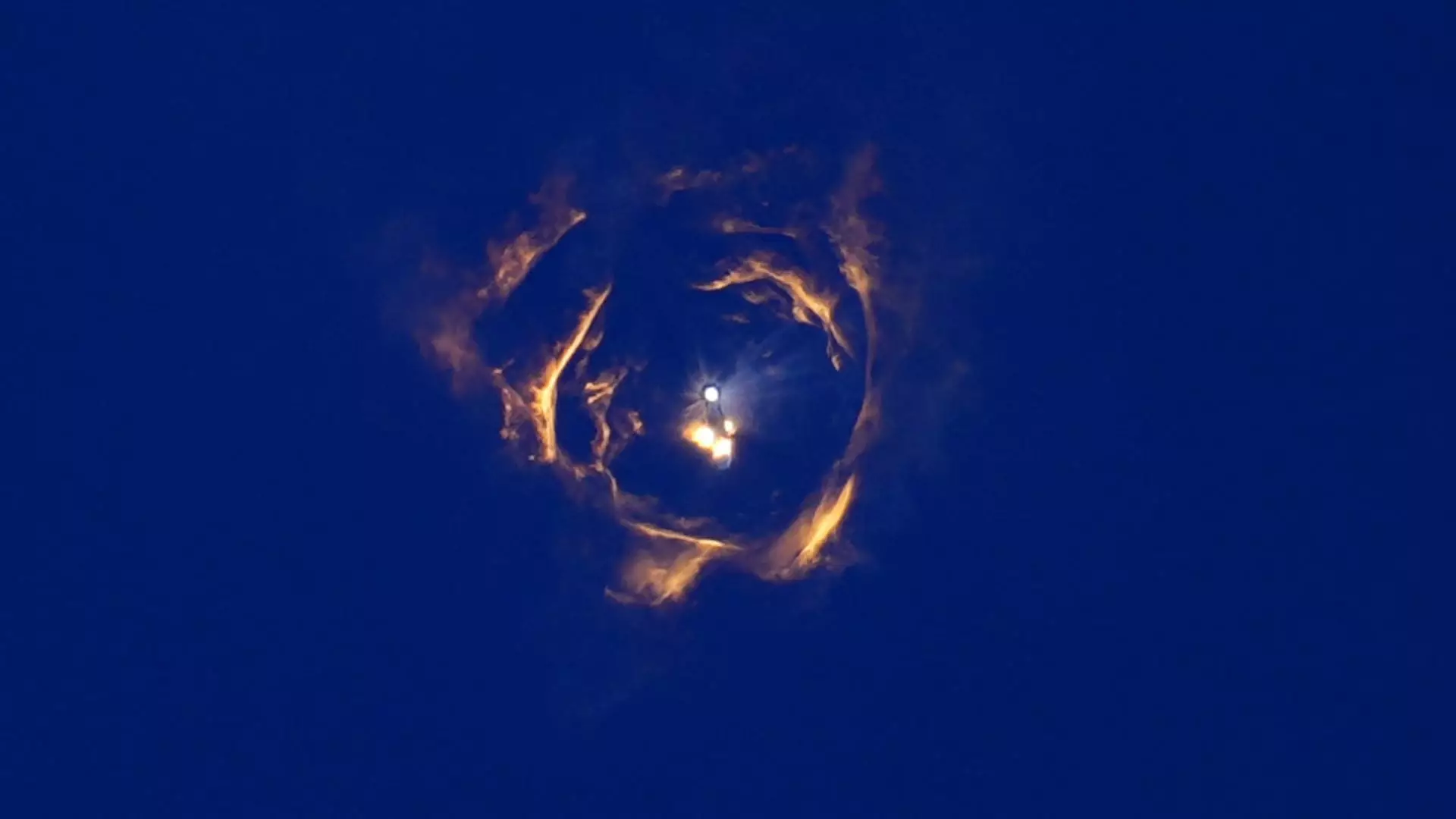On Thursday, an unsettling event unfolded in the realm of commercial aviation when SpaceX’s Starship rocket experienced a catastrophic breakup during its seventh test flight. Launched from the company’s facility in Brownsville, Texas, shortly after 5:30 p.m. ET, the rocket was headed east when it began to disintegrate mid-air, resulting in a cascade of debris over a heavily trafficked airspace. This incident triggered a rapid response from the Federal Aviation Administration (FAA), who promptly issued warnings to airborne pilots, classifying the area as dangerous due to the falling debris.
The ramifications of the Starship’s malfunction were felt almost immediately, with several commercial flights experiencing significant disruptions. According to data amassed by Flightradar24, dozens of flights were diverted or delayed as they maneuvered around the hazardous airspace affected by the debris. Among the affected flights was a JetBlue Airways service from Fort Lauderdale to San Juan, which had to redirect almost two hours into its journey. This illustrates the intricate network of civilian aviation that can be so easily thrown into disarray by unexpected events.
Additionally, other airlines, including Spirit Airlines and FedEx, also found it necessary to alter their flight paths due to the threat posed by debris. It’s noteworthy that American Airlines recorded fewer than ten diversions as a direct result of the incident. Given the congestion in Florida’s airspace, the swift response by various airlines demonstrates both the complexities and vulnerabilities inherent to commercial aviation in proximity to active space launches.
In light of this incident, the FAA’s response underscores the delicate balance between advancing aerospace technology and ensuring the safety of commercial air traffic. The agency played a crucial role in managing the crisis by distributing real-time updates and coordinating with pilots to mitigate risks. Fortunately, no injuries or property damages were reported, indicating that, while the situation was alarming, the safety protocols in place effectively minimized potential harm.
As SpaceX stated on their social media platform, they will conduct a thorough review of the flight test data to ascertain the cause of the rocket’s disintegration. This level of scrutiny reflects an ongoing commitment to safety and improvement, a necessity in a rapidly evolving field that intertwines aerospace exploration and commercial aviation.
This event serves as a poignant reminder of the necessity for continuous dialogue between space agencies like SpaceX and aviation authorities. As commercial spaceflight becomes more prevalent, the intersections with civilian aviation must be navigated with greater foresight. Enhanced communication protocols and coordinated airspace management strategies will be essential in preventing similar disruptions in the future. The collaborative effort between aerospace companies and regulatory bodies is vital not just for the success of space exploration but also for the safety and reliability of air travel as a whole. As we move forward, greater transparency and responsiveness will be essential in ensuring that commercial air traffic can coexist safely with the burgeoning frontier of space exploration.


Leave a Reply